American ideology
description: the set of beliefs and values such as individualism, freedom, and capitalism that are generally thought to be held by the American populace
53 results
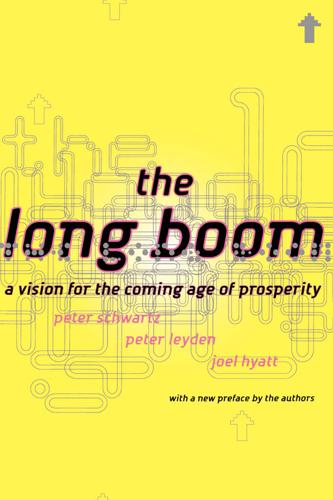
The Long Boom: A Vision for the Coming Age of Prosperity
by
Peter Schwartz
,
Peter Leyden
and
Joel Hyatt
Published 18 Oct 2000
And no current politicians articulate all of them. So the people shift their votes to Democrats and Republicans, depending on who comes closest to their beliefs about particular issues at a particular time. Hence, we use the term New American Ideology, even though it's not a rigid ideology per se. This New American Ideology is the mind-set of the Long Boom. The New American Ideology can best be stated this way: "It's not about left or right; it's about what works." The Long Boomers don't carry all the baggage from the political past about which side—the Left or the Right, the liberals or the conservatives—won what political battle and who needs to get back at whom.
…
For more information, please contact the Special Markets Department at HarperCollins Publishers, 10 last S3rd Street, New York, NY 10022, or call 1-212-207-7528, Visit us on the World Wide Web at www.basjcbooks.com CONTENTS Preface: A Shared Political Vision Introduction: The Historic Moment v 1 PART I TRAck the INEviTAbls 1 The Great Enabler "Openness Wins," 30 19 2 The Millennial Transition 1980, London, 37 "Going Global," 57 37 PART II Thi Politics of The Lowq BOOM 3 The New American Ideology 1990, Tokyo, 65 "Politics Adapts," 76 "Learning Innovation," 85 65 4 The New European Renaissance "The Inclusive Community," 102 91 5 Asia Rises Again 109 6 The Global Challenges 1999, San Francisco, 142 133 PART III THE ENQINES of THE TwENTY-fiRsT CENTURY 7 Saving the Planet "Growing Together," 165 149 iv CONTENTS 8 Dawn of the Hydrogen Age "Everyone Lets Go," 181 171 9 Technology Emulates Nature 187 10 Prepare for Wild Science "Expanding into Space," 221 211 PART IV BiRih of A GlobAl CivilizAiioN 11 The New Global Middle Class 2010, Rural California, 237 229 12 The Emergence of Women 2020, Capetown, 250 241 13 The Guiding Principles Go Global, 256 Open Up, 258 Let Go, 262 Grow More, 265 Always Adapt, 267 Keep Learning, 268 Value Innovation, 270 Get Connected, 271 Be Inclusive, 272 Stay Confident, 275 2050, American Heartland, 277 255 14 The Choice 281 AflERWORd A Memo to the President-Elect The Story of the Idea Notes Selected Bibliography About the Authors Index 291 295 303 315 321 323 PREFACE A SHAREd PoliTicAl VISION the publication of the hardcover edition of this book a year s ince ago, each week seems to bring another positive story: The American economy continues its longest expansion ever.
…
The inner cities are rotting, and crack cocaine is spreading.The family unit is crumbling. The United States is decomposing. And then I see the Soviet Union collapsing—I have no idea what that's about. I guess the two old military superpowers are going down in flames. It probably makes sense:They've The NEW AMERICAN Ideology 67 spent gazillions of dollars arming themselves to death, and now they're both gonna sink And here's Asia with all its vitality, building things. When Mol and I move back to the States in the summer, I'm totally screwed, I will be looking for jobs all over the country just when the economy's going into recession.
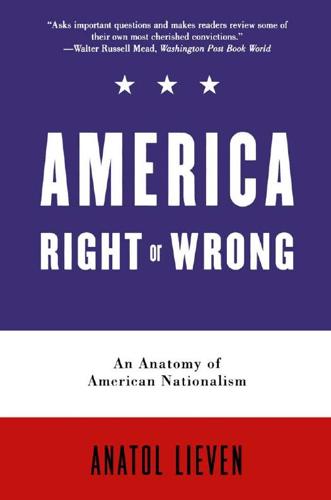
America Right or Wrong: An Anatomy of American Nationalism
by
Anatol Lieven
Published 3 May 2010
The national fear that those who are obsessed with history produce self-fulfilling prophecies does embody a great folk wisdom."74 The American Ideology, then, like classical Marxism, believes that it is possible to make a sudden "leap from the realm of necessity to the realm of freedom." Or as Reagan used to say (quoting the polemicist of the American Revolution Thomas Paine), "We have it in our power to begin the world over again." As another illustration of the underlying pervasiveness of the American Ideology, this was also a favorite phrase of 1960s radicals.75 But Kissinger also writes of the need for America in the twenty-first century to express its power and influence as far as possible by multilateral means if it does not wish its dominance to falter.76 And here the American Creed and its attendant myths, and the kind of nationalism they support, can constitute serious problems.
…
Nor is this in any sense desired by the great majority of Americans, as the increasingly skeptical response to the dragged-out war in Iraq demonstrates. There are would-be Napoleonic elements among the so-called neoconservatives, but by the Spring of 2005 their influence appeared to be in decline. The realism which tempers American ideological nationalism was demonstrated between 2001 and 2004 most notably in Bush administration's policy towards China. Even before 9/11, the Bush administration was beginning to turn from what had been an extremely dangerous strategy of confronting and containing China to one of pragmatic and moderate realism, very close to that previously vi PREFACE TO THE P A P E R B A C K EDITION followed by Bill Clinton.
…
Today it is partly reflected in the phenomenon of "political correctness" and contributes to the limitations on thought and debate in the United States concerning both the American domestic system and the nation's role in the world. 47 Two Thesis: Splendor and Tragedy of the American Creed Even a good idea can be a little frightening when it is the only idea a man has ever had. —Louis Hartz1 Nations, as individuals, who are completely innocent in their own esteem, are insufferable in their human contacts. —Reinhold Niebuhr2 T he American Thesis has also been called the American Creed and the American Ideology. It is the set of propositions about America which the nation presents to itself and to the outside world: "Americans of all national origins, classes, religions, Creeds, and colors, have something in common: a social ethos, a political Creed."3 Ralph Waldo Emerson wrote of adherence to American governing principles as a form of religious conversion.
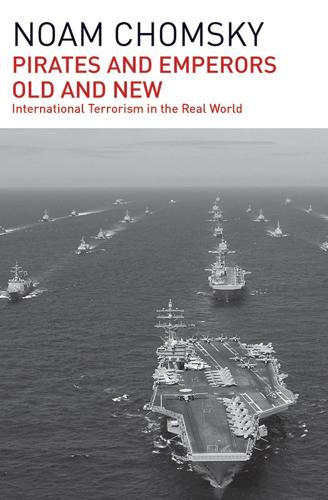
Pirates and Emperors, Old and New
by
Noam Chomsky
Published 7 Apr 2015
Contents Preface to the 2015 Edition Preface to the First Edition (1986) Introduction (2002) 1. Thought Control: The Case of the Middle East 2. Middle East Terrorism and the American Ideological System 3. Libya in U.S. Demonology (1986) 4. The U.S. Role in the Middle East (November 15, 1986) 5. International Terrorism: Image and Reality (1989) 6. The World after September 11 (2001) 7. U.S./Israel–Palestine (May 2001) Notes About the Author © Noam Chomsky 2002 Original edition published by South End Press in Cambridge, Massachusetts This edition published in 2015 by Haymarket Books P.O.
…
Navy Mass Communication Specialist 3rd Class Dylan McCord. Library of Congress Cataloging-in-Publication data is available. Contents Preface to the 2015 Edition vii Preface to the First Edition xiii Introduction 1 1. Thought Control: The Case of the Middle East 25 2. Middle East Terrorism and the American Ideological System 49 3. Libya in U.S. Demonology 105 4. The U.S. Role in the Middle East 135 5. International Terrorism: Image and Reality 155 6. The World after September 11 187 7. U.S./Israel–Palestine 207 Notes 235 Index 275 Preface to the 2015 edition As I write, the press reports that “in Iraq, Iran’s once-elusive spymaster, Maj.
…
The question cannot be asked, and if raised, could only be dismissed with distaste or horror. Literal censorship barely exists in the United States, but thought control is a flourishing industry, indeed an indispensable one in a free society based on the principle of elite decision, public endorsement or passivity. 2 Middle East Terrorism and the American Ideological System (1986) On October 17, 1985, President Reagan met in Washington with Israeli Prime Minister Shimon Peres, who told him that Israel was prepared to take “bold steps” in the Middle East and extend “the hand of peace” to Jordan. “Mr. Peres’s visit comes at a moment of unusual American–Israeli harmony,” David Shipler commented in the Times, quoting a State Department official who described U.S. relations with Israel as “extraordinarily close and strong.”
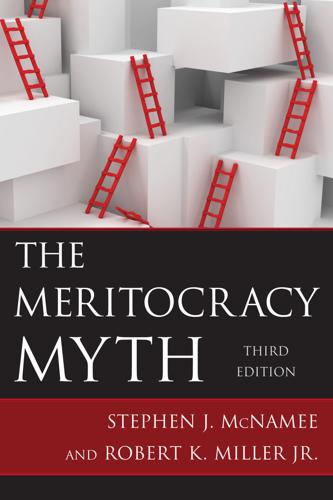
The Meritocracy Myth
by
Stephen J. McNamee
Published 17 Jul 2013
Coward, Barbara E., Joe R. Feagin, and Allen J. Williams Jr. 1974. “The Culture of Poverty Debate: Some Additional Data.” Social Problems 21:621–34. Della Fave, L. Richard. 1974. “The Culture of Poverty Revisited: A Strategy for Research.” Social Problems 21:609–21. Dunkleman, Allen J. 2000. “Our American Ideology of Success.” Unpublished senior research project, University of North Carolina at Wilmington. Ehrenreich, Barbara. 2001. Nickel and Dimed: On (Not) Getting By in America. New York: Metropolitan Books. Farkas, George. 2003. “Cognitive Skills and Noncognitive Traits and Behaviors in Stratification Processes.”
…
Put quite simply, discrimination makes it more difficult for the objects of discrimination to develop merit and reduces the likelihood that their merit will be recognized and rewarded. Racial and Ethnic Discrimination in America The long history of deliberate discrimination against racial and ethnic groups in America belies the American ideology of individual freedom and equality of opportunity. From the near-genocide of Native Americans and the banishment of survivors to reservations, to the importation and enslavement of Africans, to the subsequent Jim Crow legislation that legalized racial segregation and unequal opportunity in the South, to exclusionary acts and discriminatory immigration quotas, to land displacement of Mexican Americans, to the internment of Japanese Americans during World War II, to current forms of residential, occupational, and educational discrimination against various minorities, the American experience has for many been more of an American Nightmare than an American Dream.
…
Of course, in Israel, there are Jews, Palestinians (Muslims), and Christians. Chapter 9 Growing Inequality in the Twenty-First Century All animals are equal but some animals are more equal than others. —George Orwell, Animal Farm This book has challenged widely held assertions about meritocracy in America. According to the American ideology of meritocracy, individuals get out of the system what they put into it. The system is seen as fair because everyone is assumed to have an equal, or at least “fair,” chance of getting ahead. Getting ahead is ostensibly based on merit—on being made of the right stuff. Being made of the right stuff means being talented, working hard, having the right attitude, and playing by the rules.

Stories Are Weapons: Psychological Warfare and the American Mind
by
Annalee Newitz
Published 3 Jun 2024
I felt like I was in a war zone, or maybe a satirical movie about a war zone, waiting for the next bomb to drop. Through it all, I was trying to write my way out of the terror and confusion. I knew that I had to stop living in the moment, stop feeling the dread, and put what was happening to the United States in a deeper context. I turned to history for answers, researching American ideological conflicts of the past two hundred years—from formal military psychological operations to messy domestic culture wars—hoping to find precedents that would explain why our democracy was devolving into what felt like madness. As a science journalist, I was frustrated that there were no scientific instruments, no objective measures I could use to prove that people’s lives were being destroyed by words and ideas.
…
According to military historian Mark Jacobson, “When forced to choose between leaflets, loudspeakers and firepower [during the Korean War], operational leaders chose firepower.”28 Compounding this problem was the difficulty measuring whether a psyop had worked. It’s not as if soldiers could go out into the field and count how many people within a five-mile radius of a paper bomb had been persuaded to embrace American ideology. Linebarger and his colleagues wanted to tempt their adversaries with promises of hope and freedom, but the reality was that most leaflets were full of basic threats or news intended to hurt morale. Violence and intimidation remained the military’s favorite forms of persuasion. Lurking behind the gunfire and loudspeakers was the greatest threat of all: the Bomb.
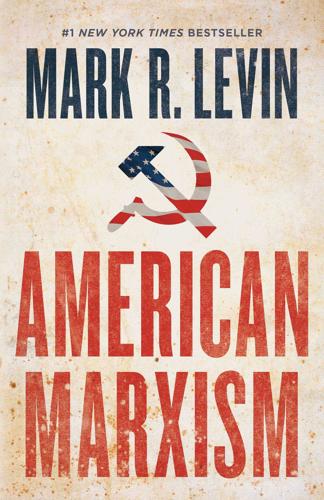
American Marxism
by
Mark R. Levin
Published 12 Jul 2021
For example, multi-billionaire George Soros pours enormous sums of money into radical causes and groups27; professional athletes such as Colin Kaepernick and LeBron James are vociferous vilifiers and disparagers of American society; many college and university professors are purveyors of revisionist American history and radical anti-American ideologies; college and university students from middle-class and wealthy families are increasingly militant opponents of the civil society; and, of course, various communities are ever more radicalized by racial, economic, educational, and other distinctions and disparities. Like Benda, Hoffer sees the fanatic and the mass movement as centered on an intense if not obsessive hatred.
…
Matthews, the Times’ foreign correspondent, “was the first American reporter to interview Fidel Castro and the last to recognize the man as a ruthless and slightly mad totalitarian murderer. He created, fell in love with, and ultimately was devoured by Castro’s mythology without ever really understanding what was happening.”62 Today, the Times gives voice to a racist, anti-American ideology built on Marxist ideas and tactics, brainwashes our children with lies, and undermines our own country. However, even before the 1619 Project, the media embraced and promoted Critical Race Theory, setting the stage for the violent riots that have engulfed numerous cities. Zack Goldberg, a doctoral candidate in political science at Georgia State University, undertook what may be the most extensive examination of media reporting on race and racism in recent years.
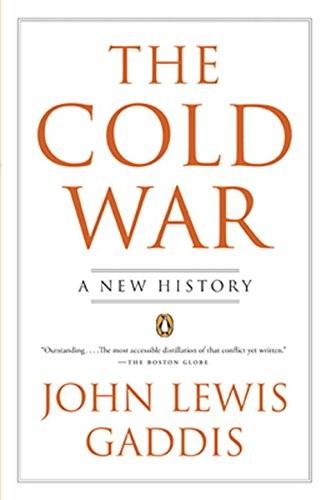
The Cold War: A New History
by
John Lewis Gaddis
Published 1 Jan 2005
But as Wilson conceived it, such a world would not be safe for proletarian revolution, nor would the reverse be true. He quickly found himself waging two wars, one with military might against Imperial Germany and its allies, the other with words against the Bolsheviks. Wilson’s Fourteen Points speech of January, 1918, the single most influential statement of an American ideology in the 20th century, was a direct response to the ideological challenge Lenin had posed. There began at this point, then, a war of ideas—a contest among visions—that would extend through the rest of World War I, the interwar years, World War II, and most of the Cold War.7 At stake was the issue that had divided Disraeli’s two nations: how best to govern industrializing societies in such a way as to benefit all of the people who lived within them.
…
IF CHAINS were required to control Stalin’s proletarians, then it is hard today to see how such an arrangement could ever have attracted support elsewhere. Privation does lead to desperation, however, and when the choice is between starvation and repression it is not always easy to make. To succeed as an alternative, the American ideology could not simply show that communism suppressed freedom. It would also have to demonstrate that capitalism could sustain it. There was never a plan, worked out in advance in Washington, for how to do this. Instead there had been conflicting objectives at the end of World War II: punishing defeated enemies; cooperating with the Soviet Union; reviving democracy and capitalism; strengthening the United Nations.
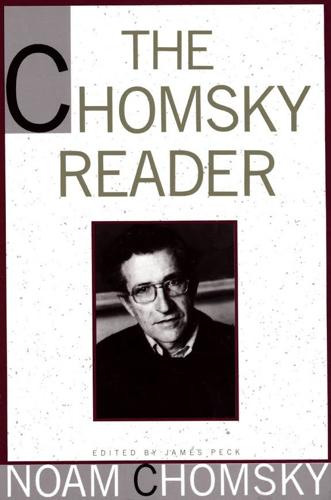
The Chomsky Reader
by
Noam Chomsky
Published 11 Sep 1987
They have laid down restrictions about pricing, distribution, profits, and management control.” The Indian reaction, I have already cited (this page). In such ways as these, we help India develop toward an open society, one which, in Walt Rostow’s words, has a proper understanding of “the core of the American ideology,” namely, “the sanctity of the individual in relation to the state.” And in this way, too, we refute the simpleminded view of those Asians who, to continue with Rostow’s phrasing, “believe or half-believe that the West has been driven to create and then to cling to its imperial holdings by the inevitable workings of capitalist economies.”
…
The important point is that the resort to a “power drive” as the explanation of imperial intervention is not false, but irrelevant, once its true character is laid bare. It is fair, I think, to suggest that this “alternative explanation” merely serves as a form of mystification, it serves to obscure the actual workings of power. The question remains: Why is American ideology and policy anti-Communist? Or a further question: Why has the United States been antifascist (though selectively)? Why was fascist Japan evil in 1940, while fascist Greece and Portugal (preserving the status quo with American arms in Africa) are quite tolerable today? And why is the United States generally anticolonialist, as in Indonesia shortly after World War II, when the conservative nationalist leadership appeared at first to favor foreign investment, but (reluctantly) not in Indochina, where the alternative to a barely disguised French colonialism was an indigenous Communist resistance?
…
The scale is essentially unknown, but just to give you one figure, it’s now estimated, from this period alone, that about 100,000 children have lost one or both parents. That was Guatemala. There was also military intervention in Cuba, the Dominican Republic, El Salvador, and Grenada. A twenty-year war of terrorism was waged against Cuba. Cuba has probably been the target of more international terrorism than any other country, and, therefore, in the American ideological system it is regarded as the source of international terrorism, exactly as Orwell would have predicted. And now there’s a war against Nicaragua. The impact of all of this has been absolutely horrendous. There’s vast starvation throughout the region while croplands are devoted to exports to the United States.
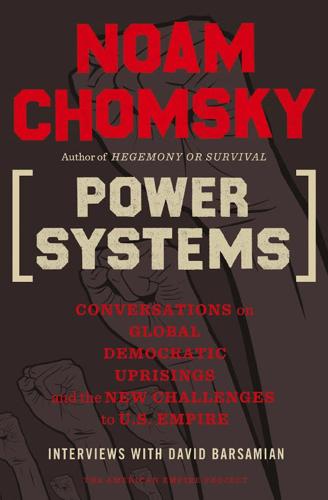
Power Systems: Conversations on Global Democratic Uprisings and the New Challenges to U.S. Empire
by
Noam Chomsky
and
David Barsamian
Published 1 Nov 2012
There are a lot of broad considerations involved. But I still suspect that domestic politics is uppermost. We can’t get out of Afghanistan without victory or we’ll be slaughtered. Is that related to the greatly expanding drone attacks on Pakistan? Yes. They’re horrible, but they’re also interesting. They tell us a lot about American ideology. The drone attacks are not a secret. There’s much we don’t know about them, but mostly they’re not a secret. The Pakistani population is overwhelmingly opposed to them, but they’re justified here on the grounds that the Pakistani leadership covertly agrees.38 Fortunately for us, Pakistan is so dictatorial that they don’t have to pay much attention to their population.39 So if the country is a brutal dictatorship, it’s great, because the leaders can secretly agree to what we’re doing and disregard their population, which is overwhelmingly opposed to it.

The View From Flyover Country: Dispatches From the Forgotten America
by
Sarah Kendzior
Published 24 Apr 2015
This advice did nothing to mend the structural inequalities that underlaid the plight of the poor. But it was an argument that seemed less callous, less obviously destructive, than it does today. Today the advice remains the same—but the options for ordinary Americans have dramatically changed. Abdicating the Imaginary Throne of the “Welfare Queen” American ideology has long tilted between individualism and Calvinism. What happened to you was either supposed to be in your control—the “pull yourself up by your bootstraps” approach—or divinely arbitrated. You either jumped, or you were meant to fall. Claims you were pushed, or you were born so far down you could not climb up, were dismissed as excuses of the lazy.
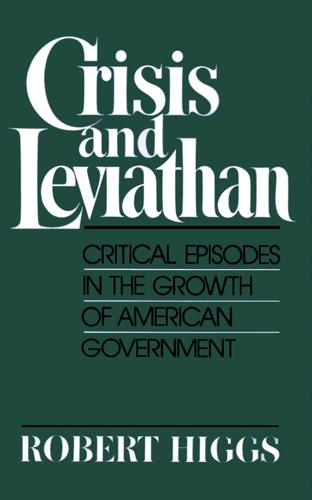
Crisis and Leviathan: Critical Episodes in the Growth of American Government
by
Robert Higgs
and
Arthur A. Ekirch, Jr.
Published 15 Jan 1987
Also Homa Katouzian, Ideology and Method in Economics (New York: New York University Press, 1980), pp. 147-148; Herbert McClosky and John Zaller, The American Ethos: Public Attitudes toward Capitalism and Democracy (Cambridge, Mass.: Harvard University Press, 1984), p. 189. 4. A. James Reichley, Conservatives in an Age of Change: The Nixon and Ford Administrations (Washington, D.C.: The Brookings Institution, 1981), R. 3. 5. George C. Lodge, The New American Ideology (New York: Kn-opf, 1976), p.7. 6. North, Structure and Change, p. 49. 7. Roy C. Macridis, Contemporary Political Ideologies: Movements and Regimes (Cambridge, Mass.: Winthrop 1980), p. 4. Notes 283 8. David joravsky, The Lysenko Affair (Cambridge, Mass.: Harvard University Press, 1970), p. 3. 9.
…
Keller, Robert R., and Ann Mari May. "The Presidential Political Business Cycle of 1972." Journal of Economic History 44 (June 1984). 336 Select Bibliography Koistinen, Paul A. C. The Military-Industrial Complex: A Historical Perspective. New York: Praeger, 1980. Lodge, George C. The New American Ideology. New York: Knopf, 1976. Navarro, Peter. The Policy Game: How Special Interests and Ideologues Are Stealing America. New York: Wiley, 1984. Palmer, John [L.], and Isabel V. Sawhill, eds. The Reagan Experiment. Washington, D.C.: The Urban Institute, 1982. - - . The Reagan Record. Cambridge, Mass.: Ballinger, 1984.
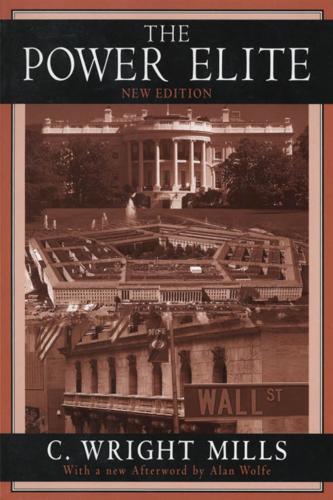
The Power Elite
by
C. Wright Mills
and
Alan Wolfe
Published 1 Jan 1956
This is the time of the American historian. All nationalist celebration tends, of course, to be put in historical terms, but the celebrators do not wish to be relevant merely to the understanding of history as past event. Their purpose is the celebration of the present. (1) One reason why the American ideology is so historically oriented is that of all the scholarly community it is the historians who are most likely to create such public assumptions. For, of all the scholarly writers, the historians have been the ones with the literate tradition. Other ‘social scientists’ are more likely to be unacquainted with English usage and moreover, they do not write about large topics of public concern. (2) The ‘good’ historians, in fulfilling the public role of the higher journalists, the historians with the public attention and the Sunday acclaim, are the historians who are the quickest to re-interpret the American past with relevance to the current mood, and in turn, the cleverest at picking out of the past, just now, those characters and events that most easily make for optimism and lyric upsurge. (3) In truth, and without nostalgia, we ought to realize that the American past is a wonderful source for myths about the American present.
…
Other ‘social scientists’ are more likely to be unacquainted with English usage and moreover, they do not write about large topics of public concern. (2) The ‘good’ historians, in fulfilling the public role of the higher journalists, the historians with the public attention and the Sunday acclaim, are the historians who are the quickest to re-interpret the American past with relevance to the current mood, and in turn, the cleverest at picking out of the past, just now, those characters and events that most easily make for optimism and lyric upsurge. (3) In truth, and without nostalgia, we ought to realize that the American past is a wonderful source for myths about the American present. That past, at times, did indeed embody quite a way of life; the United States has been extraordinarily fortunate in its time of origin and early development; the present is complicated, and, especially to a trained historian, quite undocumented. The general American ideology accordingly tends to be of history and by historians.4

In the Age of the Smart Machine
by
Shoshana Zuboff
Published 14 Apr 1988
According to George Lodge, the formative impact of this fusion of political, economic, and theological thought upon early American en- trepreneurs cannot be overestimated: "Much of the power of Locke derived from the contention that the rights he asserted were in and of the nature of things. They were in fact God's Law. . . . In America they were energized by the Calvinist notion that hard work repre- sented the holy life. . . . Traditional American ideology was thus fused with religion. It constituted a single, integrated, and synthetic body of belief. ,,3 The explicit linkage between the natural rights of ownership and divine grace had faded. Property rights began to develop their own independent validity. Thorstein Veblen described this shift in his dis- cussion of nineteenth-century business principles.
…
Chapter Six What Was Managerial Authority? 1. Max Weber, The Protestant Ethic and the Spirit of Capitalism (New York: Charles Scribner's Sons, 1958), 172. 2. John Child, British Management Thought (London: George Allen and Unwin, 1969),33. 446 Notes 3. George Cabot Lodge, The New American Ideology (New York: Alfred A. Knopf, 1975),116. 4. Thorstein Veblen, The Theory of Business Enterprise (New York: Charles Scrib- ner's Sons, 1923),73. 5. As Reinhard Bendix put it: liThe doctrine of self-help proclaimed that em- ployers and workers were alike in self-dependence, and that regardless of class each man's success was a proof of himself and a contribution to the common wealth. . . .
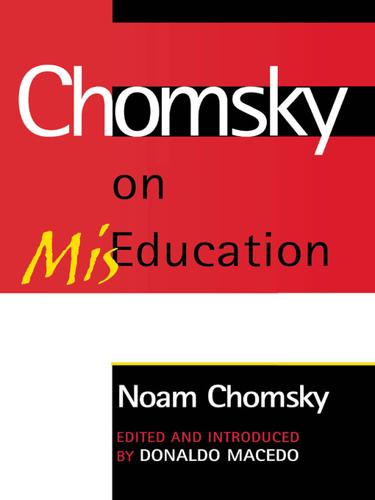
Chomsky on Mis-Education
by
Noam Chomsky
Published 24 Mar 2000
Pink Floyd, “Another Brick in the Wall,” copyright 1979 Pink Floyd Music Limited. 20. Barbara Flores, “Language Interference on Influence: Toward a Theory for Hispanic Bilingualism” (Ph.D. dissertation, University of Arizona at Tuscon, 1982), 131. 21. Cited in Howard Zinn, Declarations of Independence: Now Examining American Ideology (New York: HarperCollins, 1990), 234-35. 22. Zinn, Declarations of Independence. 23. Cited in Noam Chomsky, Towards a New Cold War (New York: Pantheon, 1982), 339-40. 24. Chomsky, Towards a New Cold War. 25. Cited in Paulo Freire and Donaldo Macedo, Literacy: Reading the Word and the World (South Hadley, Mass.: Bergin & Garvey, 1987), 130. 26.
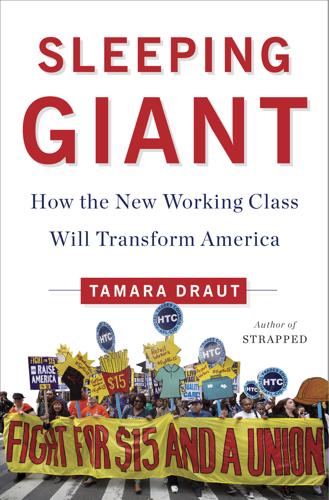
Sleeping Giant: How the New Working Class Will Transform America
by
Tamara Draut
Published 4 Apr 2016
Speight attributes this trend to the strong culture of resistance in the black community and the belief that collective action produces results. And he’s right. Compared to whites, African Americans are much more collectively oriented and community-centered, a worldview born of the reality that survival meant banding together. As John Powell recounts in his book Racing to Justice, individualism, a key value of the American ideology, is in fact a very racialized concept, and one that conflicts with the orientation toward communitarian values that are held deeply by African Americans. The tension between these two values ricochets through all our major policy debates, and generally, though not exclusively, breaks down along partisan lines, with the Democratic Party leaning more toward communitarianism and the Republican Party leaning toward individualism.
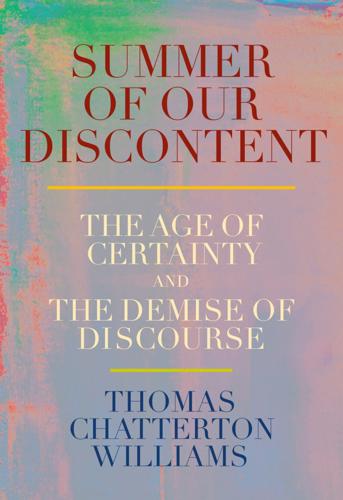
Summer of Our Discontent: The Age of Certainty and the Demise of Discourse
by
Thomas Chatterton Williams
Published 4 Aug 2025
She draws parallels between the French and the American criminal justice systems (one recent documentary is titled From Paris to Ferguson) and makes the case that there also exists “institutional racism” in her country, for example in discriminatory police stop-and-frisk practices. Her views would hardly be considered extreme in a post–Black Lives Matter American setting, but here in France she is scrutinized as a genuinely subversive agent, perhaps less because she is black or Muslim than because she is unabashedly influenced by a distinctly American ideology. In 2017, under pressure from both the left and the right, President Macron ousted—as Diallo put it to me, “canceled”—her from a government advisory council on the grounds that it is illegal to classify people by race. This move scarcely drew criticism in the mainstream. His education minister at the time, Jean-Michel Blanquer, went further and sued a teachers’ union for using the words “institutional racism” in a workshop.
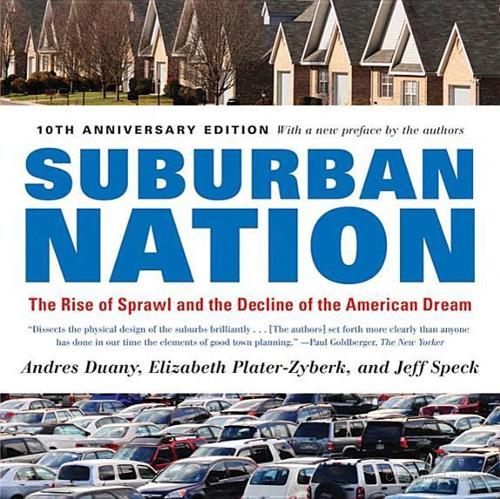
Suburban Nation
by
Andres Duany
,
Elizabeth Plater-Zyberk
and
Jeff Speck
Published 14 Sep 2010
The following policy proposals demand a commitment to community at every level of government. The promotion of community may seem to be an obvious role for the public sector, especially at the local level; some would suggest that it is the public sector’s primary responsibility. Yet it can become a sticky constitutional issue when brought face-to-face with the American ideology of rugged individualism. This is particularly true when it comes to property rights, people’s ability to do whatever they want with their land. In this regard, we must turn to the first question of political philosophy: Is it the role of government to promote individual rights while defending the common good, or to promote the common good while defending individual rights?
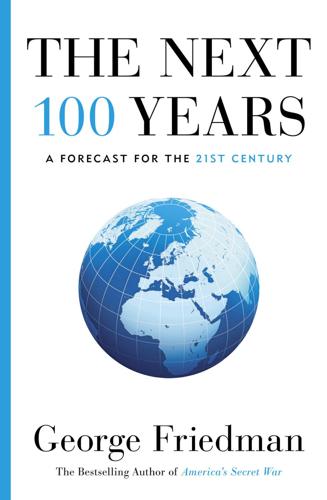
The Next 100 Years: A Forecast for the 21st Century
by
George Friedman
Published 30 Jul 2008
The fragmentation of American culture is real, but it is slowly resolving itself into the barbarism of the computer and the instrument that ultimately uses and shapes the computer, the corporation. Corporations are an American adaptation of a European concept. In its American form it turns into a way of life. Corporations are as fragmented as the rest of American culture. But in their diversity, they express the same self-certainty as any American ideology. SUMMING UP The United States is socially imitated and politically condemned. It sits on the ideological fault line of the international system. As populations decline due to shifts in reproductive patterns, the United States becomes the center for radically redefined modes of social life.

Listen, Liberal: Or, What Ever Happened to the Party of the People?
by
Thomas Frank
Published 15 Mar 2016
It was the motif of his bestselling 2006 book, The Audacity of Hope, a long salute to bipartisanship that is distinguished from the hundreds of other titles in that genre by the intellectual pirouettes that then-Senator Obama performed around this deeply boring topic. Americans have “a common set of values that bind us together despite our differences,” he proclaimed in Chapter One of that work, just before telling us “we need a new kind of politics, one that can excavate and build upon those shared understandings that pull us together as Americans.” Ideology, which is the opposite of consensus, cannot possibly “meet the challenges we face as a country.” And so tritely on. As president, Obama worked hard to signal continuity with Bush administration policy and then, in 2010, to lend his gravitas to the worldwide push for austerity. This was the low point of the Obama years, when the president made his “pivot” to deficit reduction even though the slump continued and unemployment was intolerably high.

The Financial Crisis and the Free Market Cure: Why Pure Capitalism Is the World Economy's Only Hope
by
John A. Allison
Published 20 Sep 2012
For a fascinating account of this monumental shift away from our founding political principles between the 1880s and the 1920s, see “America Reverses Direction,” Chapter 14 in Leonard Peikoff, The Ominous Parallels: The End of Freedom in America (New York: Stein & Day, 1982), pp. 279–296. 4. See Jeffrey E. Paul “The Second American Civil War: Revolution and the Roots of Counterrevolution in American Ideological History,” original paper in Social Philosophy and Policy, no. 8, Bowling Green State University. 5. See Howard Kurtz, “College Faculties a Most Liberal Lot, Study Finds,” Washington Post, March 29, 2005, p. Cl, http://www.washingtonpost.com/wp-dyn/articles/A8427-2005Mar28.html. The study, conducted by professors Robert Lichter of George Mason University, Stanley Rothman of Smith College, and Neil Nevitte of the University of Toronto, surveyed 1,643 full-time non-science faculty members at 183 four-year U.S. colleges.
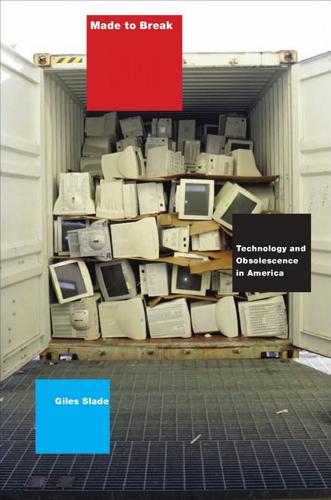
Made to Break: Technology and Obsolescence in America
by
Giles Slade
Published 14 Apr 2006
American planes and bombs, science and technology, kept the nation and the world safe, and at the same time provided a constantly increasing level of comfort to more and more Americans. The launch of Sputnik in October 1957, at a moment of economic recession, was a propaganda coup of the highest order for the Soviets. It challenged head-on two of the most basic premises of American ideology: technological superiority and the economic prosperity it supposedly fostered. As Marshall McLuhan would later observe, “The firs sputnik . . . was a witty taunting of the capitalist world by means of a new kind of technological image or icon.”16 The fact that the United States’own Vanguard satellite exploded on the launch pad two months later only deepened America’s moment of self-doubt and readied the country for a period of genuine self-criticism.
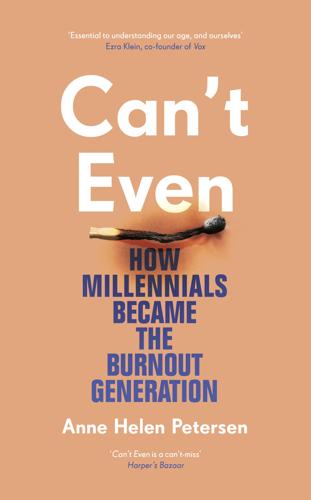
Can't Even: How Millennials Became the Burnout Generation
by
Anne Helen Petersen
Published 14 Jan 2021
At the end of a two-month-long trial, they found that productivity had risen 20 percent—while “work-life balance” satisfaction scores rose from 54 percent to 78 percent. In 2019, a similar trial at Microsoft Japan resulted in a 40 percent rise in productivity.6 Rest doesn’t just make workers happier, but makes them more efficient when they’re actually on the job.7 To admit as much, though, means confronting ossified American ideologies around work: that more work is good, and less work is bad, no matter how much evidence suggests otherwise. Which is why opting out of work, at least in our current situation, doesn’t feel possible. Earlier this year, a friend took a day off for a much-needed weekend away from her job as a lawyer at a startup.
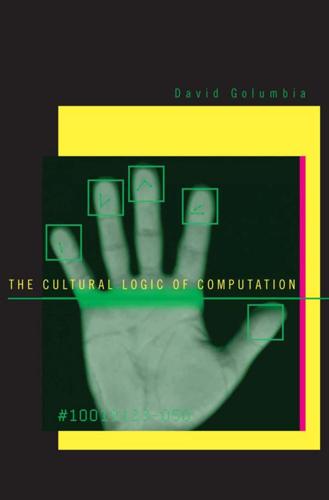
The Cultural Logic of Computation
by
David Golumbia
Published 31 Mar 2009
No doubt this is in part due to a kind of social hope, a recognition that we face deep and significant problems in our world that demand resolution. While it is clear that a certain strand of utopian enthusiasm inherent in every technological development—perhaps, as Wark might argue, one closely tied to particularly American ideologies of novelty and renewal (see, e.g., Adas 1989, 2006; Marx 1964; Noble 1977)—there is also a profoundly specific character of the IT revolution that we are especially reluctant to face head-on, despite the fact that our most trenchant social critics have tried continually to bring it to the fore.

Merchants of the Right: Gun Sellers and the Crisis of American Democracy
by
Jennifer Carlson
Published 2 May 2023
For those conservatives unnerved by the association of high-end coffee with liberalism, they can now comfortably shop at outlets like Black Rifle Coffee (the “Starbucks of the Right,” ventured the New York Times15), Covfefe Coffee and Gifts in Maine,16 and Conservative Grounds in Florida.17 (Liberals, for their part, can shop at outfits like Starbucks, which markets coffee by appealing to diversity and inclusion, green capitalism, and community uplift.18) As Conservative Grounds co-owner Cliff Gephart noted to the Washington Post, “it’s a place for conservatives to feel welcome … it’s about a conservative lifestyle.”19 Politics has swelled beyond a set of beliefs to shape lifestyles—hence the grain-of-truth stereotypes of the “bird hunting conservative” and the “latte liberal.”20 This partisanization of everyday life both reflects and is reinforced by geographical sorting that has increasingly isolated Americans ideologically, a process that began in the 1970s according to journalist Bill Bishop, author of The Big Sort.21 Since then, communities within the United States have only become more politically homogeneous as people have increasingly “voted with their feet” by seeking out places that “feel” comfortable.
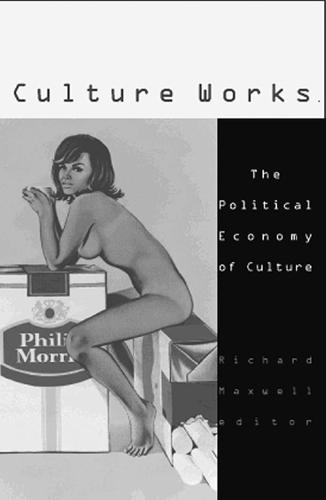
Culture works: the political economy of culture
by
Richard Maxwell
Published 15 Jan 2001
The second was a rhetorical tool employed in this political and economic campaign, which I term the discourse of freedom. After several decades of isolationism in the first half of the twentieth century, the exigencies of the Cold War brought about a new awareness among U.S. political and economic leaders regarding the role of culture in promoting American ideology both at home and abroad. Faced with the threat of expanding Soviet influence after World War II, the United States found itself in a position where it had to prove its superiority by demonstrating the power and benefits of U.S. democracy versus Soviet communism. On the broadest level, this involved dramatic displays of economic power, military might, technological advances, and cultural achievement.
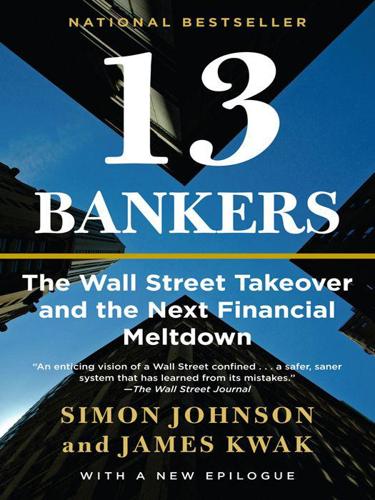
13 Bankers: The Wall Street Takeover and the Next Financial Meltdown
by
Simon Johnson
and
James Kwak
Published 29 Mar 2010
As Senator Schumer said in 2007 of existing financial regulations, “We are not going to rest until we change the rules, change the laws and make sure New York remains No. 1 for decades on into the future.”57 The New American Dream was to make tens of millions on Wall Street or as a hedge fund manager in Greenwich, Connecticut. But it was also connected to the Old American Dream—to own a house of one’s own. In the last thirty years, the Wall Street ideology borrowed heavily from the older, more deep-rooted American ideology of homeownership, which became widely accepted after World War II as government programs and economic prosperity made possible a homeowning middle class. Wall Street co-opted this ideology to justify the central place of modern finance in the economic and political system, especially as the homeownership rate climbed from 64 percent, where it sat from 1983 to 1994, to a high of 69 percent in the 2000s.58 The ideology of homeownership has its roots in two sources.
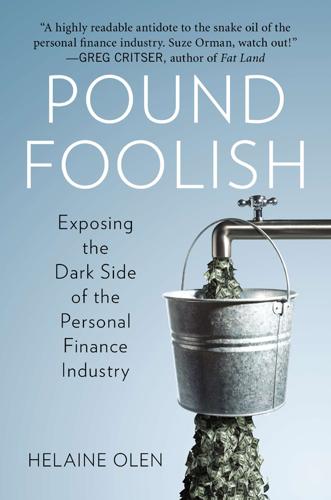
Pound Foolish: Exposing the Dark Side of the Personal Finance Industry
by
Helaine Olen
Published 27 Dec 2012
To expect Orman to make the leap from articulating the problem—your salary is not keeping up!—to suggesting how we can solve the problem on a societal basis is to misunderstand the phenom that is Suze Orman, the self-help industry, and, yes, the personal finance industrial complex. “The power Suze Orman has comes from reinforcing the American ideology of individualism,” McGee told me, adding that by telling people they have more power than they really do, you are at least motivating them to take what action they can. And, maybe, that is the best one can expect from Suze Orman, the ultimate saleswoman who has gone from selling subpar pancakes to peddling financial platitudes.

How Not to Network a Nation: The Uneasy History of the Soviet Internet (Information Policy)
by
Benjamin Peters
Published 2 Jun 2016
In 1953, Aksel’ Berg, then deputy minister of defense in charge of radar and future dean of Soviet cybernetics, asked Kitov to prepare a report on the state of computing in the West.1 Kitov’s optimistic report resulted in the creation of three large computational facilities—the Computation Center 1 (which Kitov directed until 1959), the Navy Computation Center, and the Air Force Computation Center.2 Kitov’s optimistic review of computing in the West stemmed from his 1952 discovery of a copy of Norbert Wiener’s Cybernetics that had been removed from general circulation (due to the ongoing anti-American campaign against cybernetics) and stored in a top-secret military research library. As noted above, in 1955, Kitov coauthored (with Lyapunov and Sobolev, two highly regarded Soviet mathematicians) the first Soviet article to attempt to rehabilitate cybernetics from the anti-American ideological critique that had been waged since its first mention in the Soviet press in 1948. Kitov was not alone in seeing the potential for using computers in military work. Military and computing innovations were inseparable in the early history of computing. Although those early, specialized computer innovations for the military often had no measurable defense outcomes, their technological innovations seeped into nonmilitary industries.
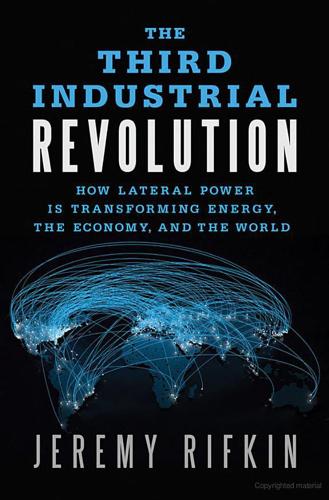
The Third Industrial Revolution: How Lateral Power Is Transforming Energy, the Economy, and the World
by
Jeremy Rifkin
Published 27 Sep 2011
A growing number of Canadians, however, question whether NAFTA makes their country a valued partner or a useful appendage to the United States. Many Canadians deeply oppose strengthening NAFTA, arguing that Canada is already being absorbed into the larger US economy and is losing its political sovereignty in the process. Canadians also worry that NAFTA will mean having to go along with the dominant American ideology, which is often at odds with Canada’s deeply held cultural and social values. They fear that the new “continentalism” is merely coded language for erasing the border along the forty-ninth parallel. In short, they suspect that NAFTA is a front for a twenty-first century, high-tech American colonialism designed to grab hold of Canada’s rich resources and remake its citizenry in the United States’ image.

Uneasy Street: The Anxieties of Affluence
by
Rachel Sherman
Published 21 Aug 2017
He insisted that his children would have paying jobs when they were in high school, saying “There’s no doubt in my mind. One thousand percent.” This kind of orientation was exactly the one I had expected when I started my research. The idea of working hard on an equal playing field as the most desirable means to get ahead is the definition of the American Dream, which permeates American ideology and popular culture.2 By the same token, other scholars have shown that privileged people often explain and justify their social advantages by alluding to their hard work.3 My research both supports and challenges this idea. On the one hand, most of the people I interviewed, whether upward- or downward-oriented, echoed Paul’s emphasis on working hard as one basis for deserving wealth.
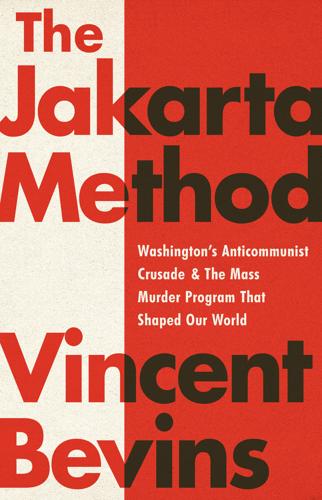
The Jakarta Method: Washington's Anticommunist Crusade and the Mass Murder Program That Shaped Our World
by
Vincent Bevins
Published 18 May 2020
Washington’s anticommunist crusade had actually started well before World War II. Just after the Russian Revolution, President Woodrow Wilson chose to join the other imperial powers in helping the White forces attempt to retake control from the Bolshevik revolutionaries. For two reasons. First, the core, foundational American ideology is something like the exact opposite of communism.15 Strong emphasis is placed on the individual, not the collective, and an idea of freedom that is strongly linked to the right to own things. This had been, after all, the basis for full citizenship in the early American republic: only white men with property could vote.
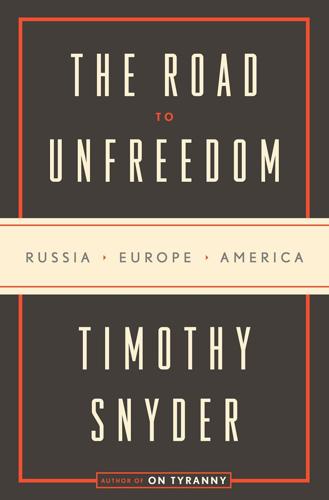
The Road to Unfreedom: Russia, Europe, America
by
Timothy Snyder
Published 2 Apr 2018
His friend Girkin proclaimed himself the minister of war, and asked Russia to invade the Donbas and establish military bases. * * * — The Russian intervention in the Donbas was called the “Russian Spring.” It was certainly springtime for Russian fascism. On March 7, 2014, Alexander Dugin rejoiced in “the expansion of liberational (from Americans) ideology into Europe. It is the goal of full Eurasianism—Europe from Lisbon to Vladivostok.” The fascist commonwealth was coming into view, boasted the fascist. A few days later, Dugin proclaimed that history had been undone: “Modernity was always essentially wrong, and we are now at the terminal point of modernity.
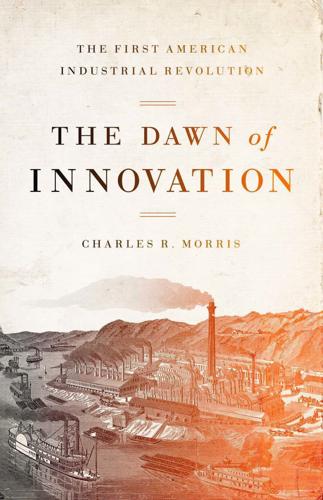
The Dawn of Innovation: The First American Industrial Revolution
by
Charles R. Morris
Published 1 Jan 2012
On the eve of the Civil War, only 16 percent of the workforce was in manufacturing. 40 They worked in grain milling, meatpacking, lard refining, turning logs into planks and beams, iron smelting and forging, and making steam engines and steamboats, vats and piping, locomotives, reapers and mowers, carriages, stoves, cotton and woolen cloth, shoes, saddles and harnesses, and workaday tools. These were the industries in which America’s comparative advantage loomed largest and were the ones that dominated American output. It was the drive to mass scale in those industries, by a wide variety of strategies and methods, that was the real American system, or perhaps the American ideology, of manufacturing. America in 1860: On the Brink The Civil War violently disrupted economic growth, but by finally resolving the sectional conflict, and excising the cancer of slavery, it removed the last important obstacle to continental expansion and vigorous industrialization. Abraham Lincoln came out of the old Whig tradition of Henry Clay—egalitarian, pro–manufacturing and protective tariffs, pro-education, and pro–canals, roads, and interior development.

The Innovation Illusion: How So Little Is Created by So Many Working So Hard
by
Fredrik Erixon
and
Bjorn Weigel
Published 3 Oct 2016
Crafting it at Harvard University and his Goldman Sachs trading desk in the 1960s, Rubin looked at economic policy through the prism of probability and turned uncertainties into calculable risks and alternative scenarios through self-defeat tests.10 The complex economy could be made less complex – and a rationalist approach, with government intervention, could protect it from shocks and crises. Greenspan and Rubin, with their roots in two very different strands of American ideology, became symbols of an era. Powered by a renewed belief in market forces, infinite growth in the financial sector, and globalization, it was a time of aspirations to build a stable system for international peace, freedom, and prosperity on the back of cross-border trade, investment and capital flows.
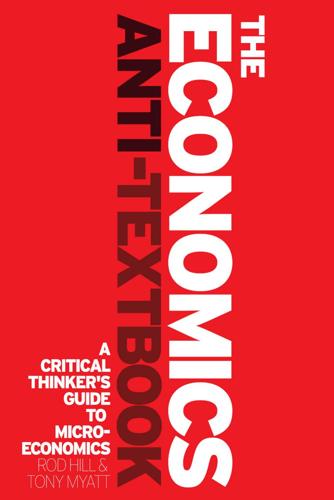
The Economics Anti-Textbook: A Critical Thinker's Guide to Microeconomics
by
Rod Hill
and
Anthony Myatt
Published 15 Mar 2010
Wilkinson, R. and M. Marmot (eds) (2003) Social Determinants of Health: The solid facts, 2nd edn, Geneva: World Health Organization. available at www.guardian.co.uk/ environment/2008/may/06/waste. pollution/print, accessed 14 February 2009. Zinn, H. (1990) Declarations of Independ- ence: Cross-examining American ideology, New York: HarperCollins. — (2002) The Future of History: Interviews with David Barsamian, Monroe, ME: Common Courage Press. 290 Glossary Adding-up problem: if labour is paid its marginal product, will the residual amount be just enough to pay capital its marginal product? Answer: only if there are constant returns to scale!
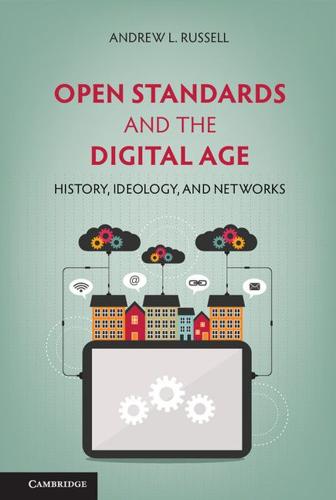
Open Standards and the Digital Age: History, Ideology, and Networks (Cambridge Studies in the Emergence of Global Enterprise)
by
Andrew L. Russell
Published 27 Apr 2014
Hall and David Soskice, eds., Varieties of Capitalism: The Institutional Foundations of Comparative Advantage (New York: Oxford University Press, 2001), 442–473. 15 Robert D. Cuff, The War Industries Board: Business-Government Relations during World War I (Baltimore: The Johns Hopkins University Press, 1973), 15–30. See also Ronald C. Tobey, The American Ideology of National Science, 1919–1930 (Pittsburgh: University of Pittsburgh Press, 1971), xii, 3–96; and Noble, America By Design, 79–81. 16 Paul G. Agnew, “Historical Memoranda to H (for Mrs. Moffett), 9/3/48, in P. G. Agnew, Historical and Policy Papers (New York: American Standards Association, 1920–1952), 335.
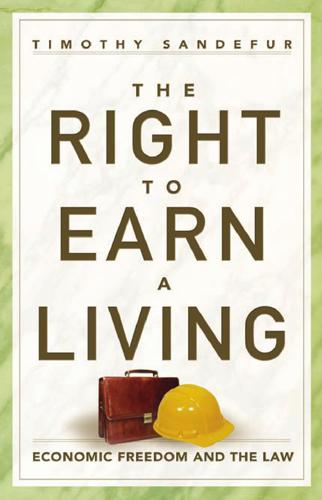
The Right to Earn a Living: Economic Freedom and the Law
by
Timothy Sandefur
Published 16 Aug 2010
SEC, 641 F.2d 1304, 1307 (9th Cir. 1981) (“Ownership is a collection of rights to use and enjoy property including the right to sell and transmit the same” (quoting Energy Oils, Inc. v. Montana Power Co., 626 F.2d 731, 736 (9th Cir. 1980)). 124. 2 William Blackstone, Commentaries *447. 125. Ex parte Garland, 71 U.S. (4 Wall.) 333, 370 (1866) (argument of Mr. Johnson). 126. Gonzales v. Raich, 545 U.S. 1 (2005). 127. Ibid. 128. Jim Chen, “The American Ideology,” Vanderbilt Law Review 48 (1995): 829–30. 129. Motor Vehicle Franchise Act, 815 Ill. Comp. Stat. 710/4(e)(8) et seq. 130. 815 Ill. Comp. Stat. 710/12(c). 330 Notes for Pages 171–175 131. 815 Ill. Comp. Stat. 710/12(c)(7) (emphasis added). 132. Prior of Christchurch Canterbury v. Bendysshe, 93 Selden Society 8, 9 (1503). 133.

Consumed: How Markets Corrupt Children, Infantilize Adults, and Swallow Citizens Whole
by
Benjamin R. Barber
Published 1 Jan 2007
In the gently mocking Broadway comedy hit of an earlier era (subsequently a successful film) Tea House of the August Moon, a clever, seemingly obsequious Japanese houseboy, attached to a commanding reeducation officer in occupied Japan, uses his post to inflect with subversive Japanese elements and hence ultimately deflect the happy American ideology being inculcated. Even in defeat, Japan conditioned the American culture being imposed on it. By the 1980s, historians like Paul Kennedy were arguing that Japan was actually reacquiring its status as a dominant power, threatening to displace American hegemony,7 although by that time Japan was itself being creolized by the America for which it was becoming a dominant automobile and technology supplier.

The Ice at the End of the World: An Epic Journey Into Greenland's Buried Past and Our Perilous Future
by
Jon Gertner
Published 10 Jun 2019
Copenhagen: Museum Tusculanum Press, 2010. Birket-Smith, Kaj. “Knud Rasmussen.” Journal de la Société des Américanistes 25, no. 2 (1933). ———. Knud Rasmussen’s Saga. Copenhagen: Chr. Erichsens Forlag, 1936. ———. The Eskimos. New York: E. P. Dutton and Company, 1936. Bloom, Lisa. Gender on Ice: American Ideologies of Polar Expeditions. Minneapolis: University of Minnesota Press, 1993. Bobé, Louis. Hans Egede: Colonizer and Missionary of Greenland. Copenhagen: Rosenkilde and Bagger, 1952. Born, Erik W., et al. Polar Bears in Northwest Greenland: An Interview Survey About the Catch and the Climate.

Evil Geniuses: The Unmaking of America: A Recent History
by
Kurt Andersen
Published 14 Sep 2020
But despite the liberal Establishment’s openness and the right’s new think tanks and foundations and zillionaire donors, it seemed in the 1970s that the antigovernment diehards and libertarian freaks, the Milton Friedmanites and Ayn Randians and Wall Street Journal ideologues, would never really be allowed to run the show. The American ideological center of gravity was plainly undergoing a rightward shift, but wouldn’t the 1980s just turn out to be some kind of modest course correction, like what happened in the late 1940s and ’50s, part of the normal endless back-and-forth pendulum swing from center-left to center-right? We had no idea.

The Long Game: China's Grand Strategy to Displace American Order
by
Rush Doshi
Published 24 Jun 2021
All of this changed abruptly following what this book calls the “traumatic trifecta” of Tiananmen Square (1989), the Gulf War (1990–1991), and the Soviet collapse (1991). These three short but historic years reshaped the United States, China, and the international system, and each heightened Beijing’s anxieties about the United States. The Tiananmen Square protests reminded Beijing of the American ideological threat, the swift Gulf War victory reminded it of the American military threat, and loss of the shared Soviet adversary reminded it of the American geopolitical threat. In short order, the United States quickly replaced the Soviet Union as China’s primary security concern, that in turn led to a new grand strategy, and a thirty-year struggle to displace American power was born.
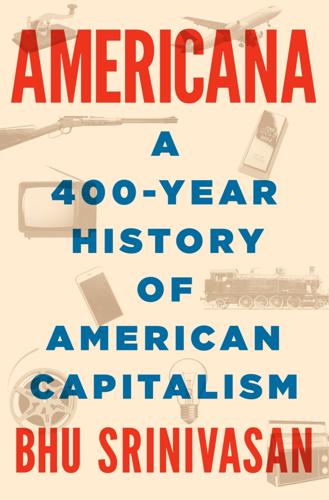
Americana: A 400-Year History of American Capitalism
by
Bhu Srinivasan
Published 25 Sep 2017
Indeed, the expensive science that often yielded transformation would increasingly come from government-funded research, which ironically could be conducted without regard to its commercial prospects. The notion that only the profit motive could lead to invention or maximize production was contradicted by the performance of America during wartime. But after victory, the paramount American ideology that emerged again was its steely pragmatism: one that could contract the principles of both democracy and capitalism in times of crisis but was rooted in its ability to revert to its traditional conceits when threats dissipated—a Darwinian mode of internal and external statecraft that adapted to shifting conditions.

Americana
by
Bhu Srinivasan
Indeed, the expensive science that often yielded transformation would increasingly come from government-funded research, which ironically could be conducted without regard to its commercial prospects. The notion that only the profit motive could lead to invention or maximize production was contradicted by the performance of America during wartime. But after victory, the paramount American ideology that emerged again was its steely pragmatism: one that could contract the principles of both democracy and capitalism in times of crisis but was rooted in its ability to revert to its traditional conceits when threats dissipated—a Darwinian mode of internal and external statecraft that adapted to shifting conditions.
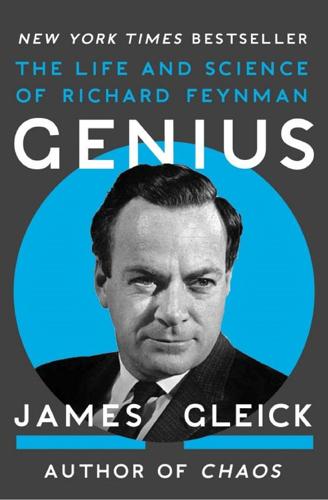
Genius: The Life and Science of Richard Feynman
by
James Gleick
Published 1 Jan 1992
“An Incessant Search for New Approaches.” Physics Today, September, 61. Telegdi, Valentine L. 1972. “Crucial Experiments on Discrete Symmetries.” In Mehra 1973, 457. Teller, Michael E. 1988. The Tuberculosis Movement: A Public Health Campaign in the Progressive Era. New York: Greenwood Press. Tobey, Ronald C. 1971. The American Ideology of National Science 1919–1930. Pittsburgh: University of Pittsburgh Press. Tomonaga, Shin’ichiro. 1966. “Development of Quantum Electrodynamics: Personal Recollections.” In Nobel Lectures: Physics 1963–1970. Amsterdam: Elsevier. Torretti, Roberto. 1990. Creative Understanding: Philosophical Reflections on Physics.

Thinking Without a Banister: Essays in Understanding, 1953-1975
by
Hannah Arendt
Published 6 Mar 2018
It is an odd fact which, of course, has often been noticed that Jefferson, when he drafted the Declaration of Independence, changed the current formula in which the inalienable rights were enumerated from “life, liberty and property” to “life, liberty and the pursuit of happiness.” It is even stranger that in the debates which preceded the adoption of Jefferson’s draft this alteration was not discussed; and this curious lack of attention to a phraseology, which in the course of the following centuries has contributed to a specifically American ideology more than any other word or notion, stands almost as much in need of explanation as the phrase itself. It is quite possible that this original lack of attention was due to the high regard paid to Mr. Jefferson’s famous “felicity of the pen”; it is even more likely that the change escaped attention because the word “happiness” occupied a pre-revolutionary place in political language so that it sounded quite familiar in its context.

The Taste of War: World War Two and the Battle for Food
by
Lizzie Collingham
Published 1 Jan 2011
A blackboard propped outside a mock-up of a grocer’s shop carried a message warning that Marshall Aid would end in 1952 and when it did the British government would only be able to import food for which it could pay.54 Therefore British workers needed to see themselves as producers rather than consumers and continue to work hard to manufacture export goods. If Britain did not embrace the American ideology, its economic position was nevertheless shaped by its relationship with the United States. Britain’s austerity measures were a direct result of the ending of lend-lease and of the nation’s need to earn foreign exchange to buy imports of food and pay off its debt to the United States. This in turn shaped Britain’s new post-war relationship with its empire.
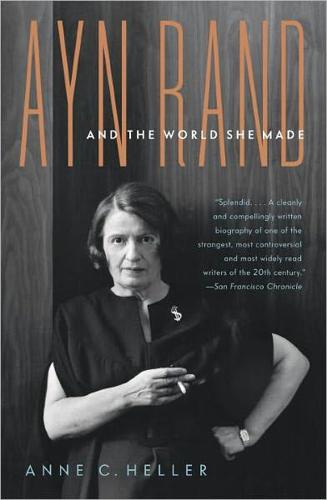
Ayn Rand and the World She Made
by
Anne C. Heller
Published 27 Oct 2009
She bound Peikoff to her tightly, partly through a scholarly book he had been working on since the early 1960s. Called The Ominous Parallels: The End of Freedom in America, its purpose was to amplify Rand’s controversial argument in “The Fascist New Frontier” that America was marching toward Fascism, by comparing postwar American ideology with German philosophical ideas he argued had given rise to the Third Reich. He became preoccupied with Nazi atrocities against thinkers and Jews, tracing them to Kant and Hegel. The book was scheduled to appear in 1969, by arrangement with Weybright and Talley, a publishing firm founded by Victor Weybright, Rand’s friend at NAL.
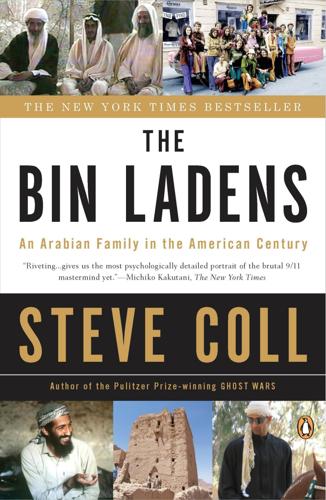
The Bin Ladens: An Arabian Family in the American Century
by
Steve Coll
Published 29 Mar 2009
In both a literal and a cultural sense, the Bin Laden family owned an impressive share of the America upon which Osama declared war, and yet, as was true of the relationship between the Saudi and American governments, their involvement in the United States also proved to be narrow and brittle. This made both Osama’s anti-American ideology and his family’s response to it all the more complex. The Bin Laden family’s global character owes much to the worldwide shape of the oil market and the wealth it created after 1973, but it is rooted, too, in an age before combustion engines. Osama’s generation of Bin Ladens was the first to be born on Saudi soil.
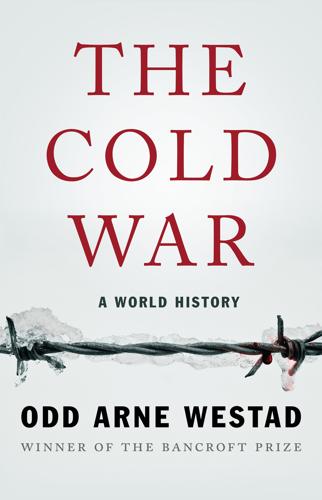
The Cold War: A World History
by
Odd Arne Westad
Published 4 Sep 2017
US support for such government-centered development plans can also be explained by the Truman Administration’s realization of just how bad the situation had been all over Europe in the 1940s. If the choice was between chaos, opening up for Soviet subversion, and government-imposed order, it was not difficult to make, for Truman in Europe or for later US administrations elsewhere in the world, in spite of American ideological predilections. Many US representatives in postwar Europe (as well as in postwar Japan) had backgrounds in the United States’ own experiments with state-led initiatives during the New Deal. Granted, western European initiatives went much further toward state planning than anything implemented long-term in the United States.
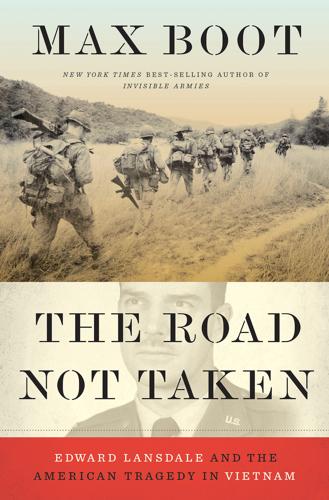
The Road Not Taken: Edward Lansdale and the American Tragedy in Vietnam
by
Max Boot
Published 9 Jan 2018
Vietnam and America were on a long and winding path—a road not previously taken, if you will—that by the twenty-first century would lead them to become de facto allies against North Vietnam’s erstwhile backer, the People’s Republic of China. Lansdale did not live long enough to see this improbable twist of fate. But he would hardly have been surprised to learn that the American ideology of freedom, in which he had believed with boundless devotion ever since as a boy he had read green leather-bound books on the American Revolution in his father’s library, had prevailed over the illiberal forces of Communism. Ed Lansdale had been serenely confident all along about the universal appeal of the Declaration of Independence and its “self-evident truths.”
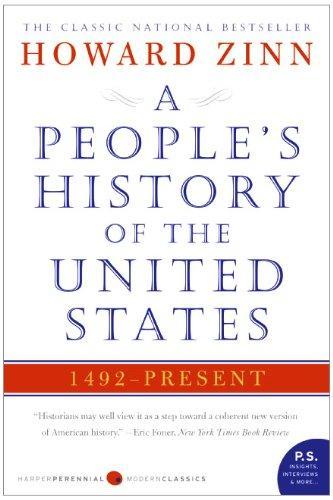
A People's History of the United States
by
Howard Zinn
Published 2 Jan 1977
Other Books by Howard Zinn La Guardia in Congress 1959 The Southern Mystique 1964 SNCC: The New Abolitionists 1964 New Deal Thought (editor) 1965 Vietnam: The Logic of Withdrawal 1967 Disobedience and Democracy 1968 The Politics of History 1970 The Pentagon Papers: Critical Essays 1972 (editor, with Noam Chomsky) Postwar America 1973 Justice in Everyday Life (editor) 1974 Declarations of Independence: Cross-Examining American Ideology 1991 Failure to Quit: Reflections of an Optimistic Historian 1993 You Can’t Be Neutral on a Moving Train 1994 The Zinn Reader 1997 The Future of History 1999 Marx in Soho: A Play on History 1999 On War 2001 On History 2001 Terrorism and War 2002 Emma: A Play 2002 Copyright A PEOPLE’S HISTORY OF THE UNITED STATES.
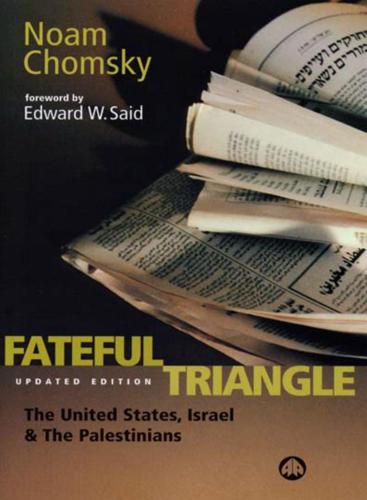
Fateful Triangle: The United States, Israel, and the Palestinians (Updated Edition) (South End Press Classics Series)
by
Noam Chomsky
Published 1 Apr 1999
Germond and Jules Witeover observe that “Israel’s supporters” hope that the Report “will help arrest ‘the waning of enthusiasm’ toward Israel” in Congress, and “make it easier for [friends of Israel in Congress] to give their support and encourage Americans to do the same.” Boston Globe, Feb. 15, 1983. It may, then, serve the same function as the demonstrations in Israel after the massacres, when filtered through the American ideological system. Classics in Politics: The Fateful Triangle Noam Chomsky Aftermath 675 standards adopted by the Times with regard to U.S. aggression in Indochina, the U.S. overthrow of the democratic government of Guatemala and its support for a series of neo-Nazi murderers since, and much else.
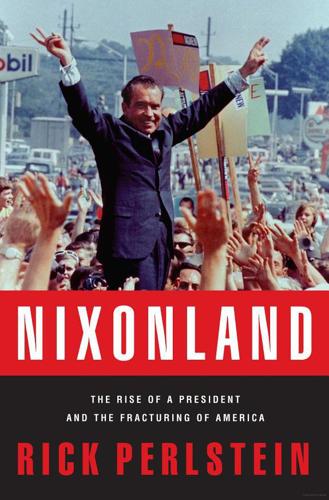
Nixonland: The Rise of a President and the Fracturing of America
by
Rick Perlstein
Published 1 Jan 2008
The left-wing folksinger John Prine responded, in song, upon “digesting Reader’s Digest in the back of a dirty book store,” that waving flags didn’t “get you into heaven anymore—they’re already too crowded from your dirty little war.” Five years after Lyndon Johnson was elected on a platform of consensus, every conceivable cultural expression fell to one or another side of the American ideological divide. Smart businessmen figured out ways to sell to both sides. The Christmas season’s most brilliant entrepreneur was surely the guy who invented the Spiro Agnew wristwatch. Hipsters bought it as a kitschy screw-you to his admirers. The Silent Majority bought it as a screw-you to his detractors.